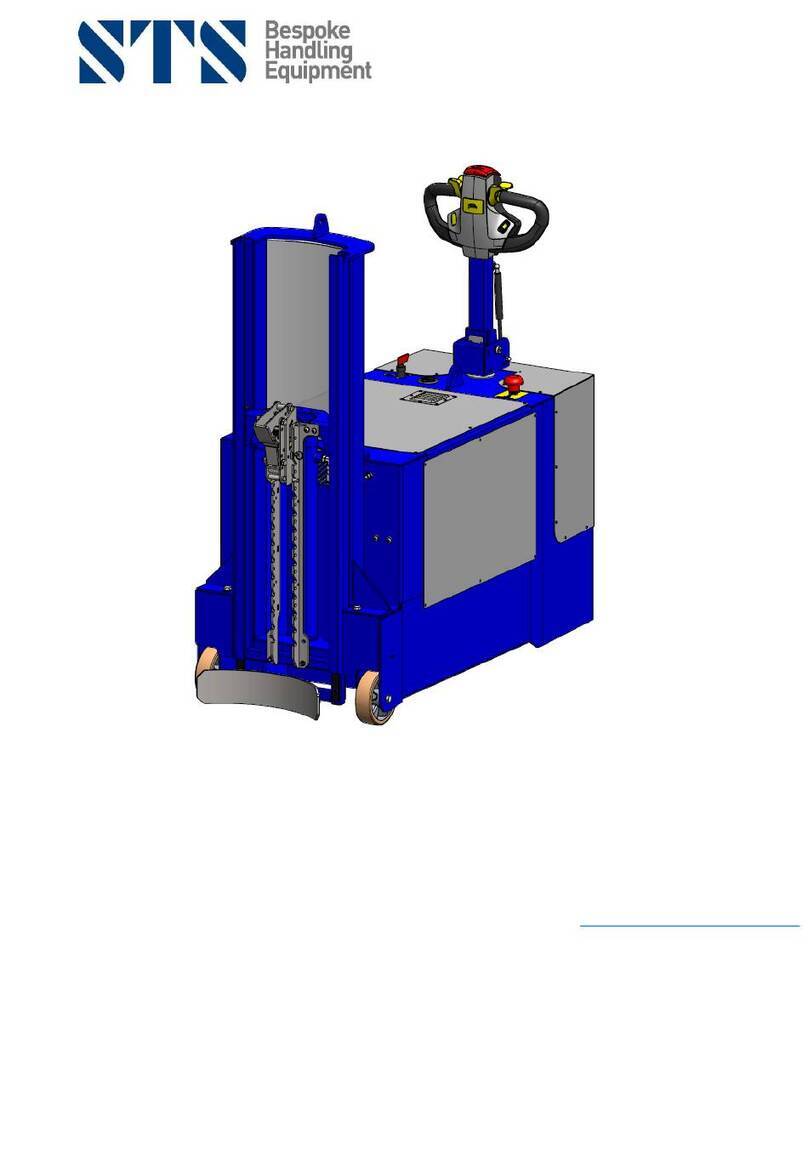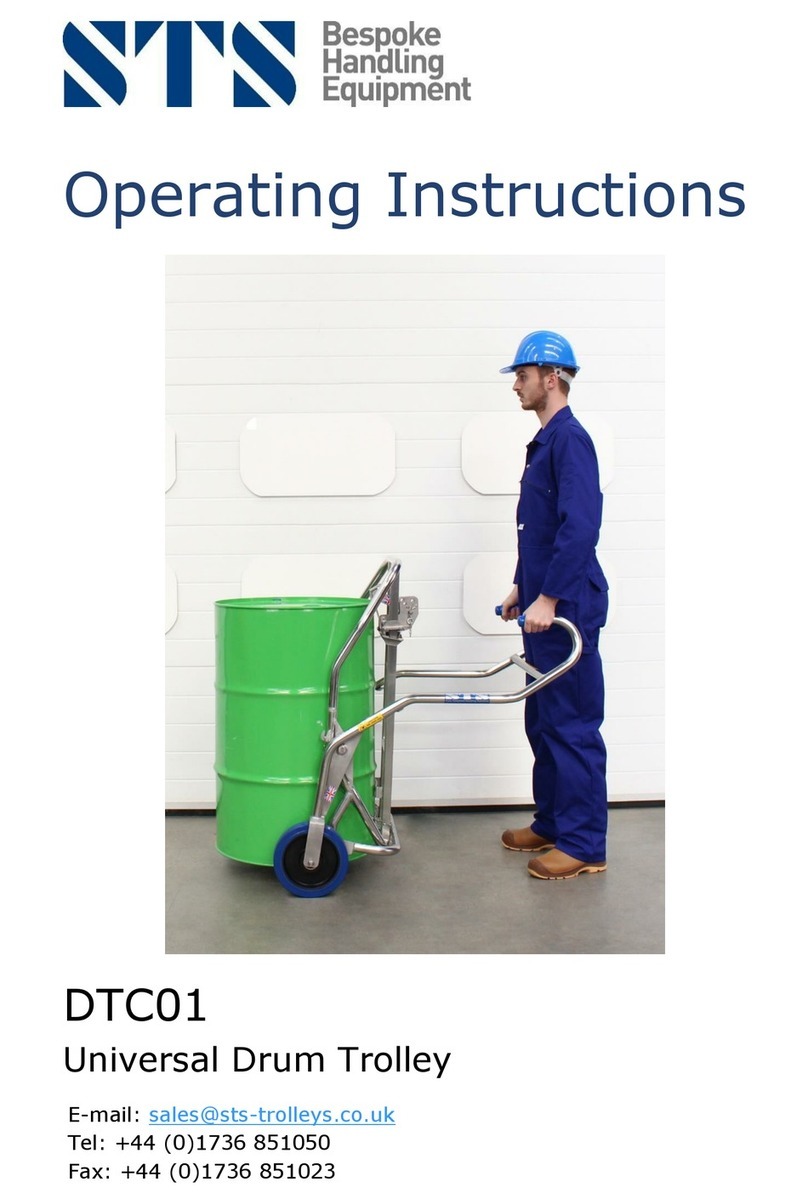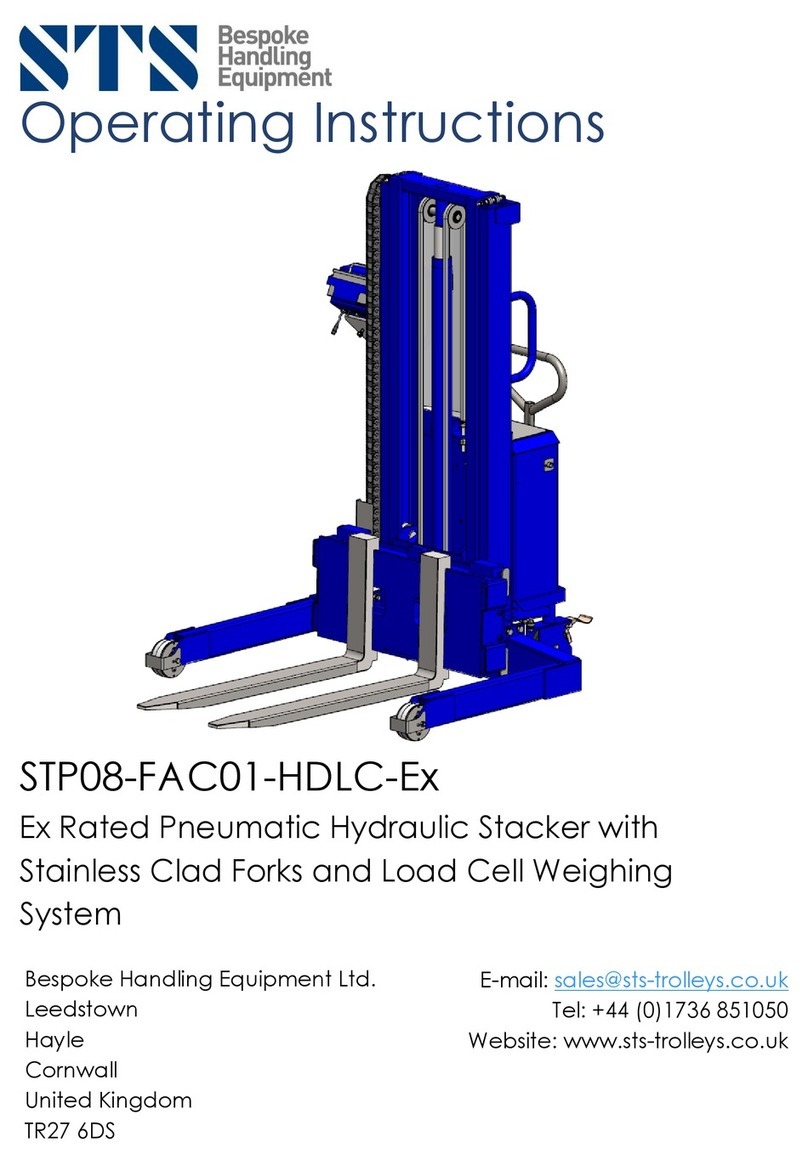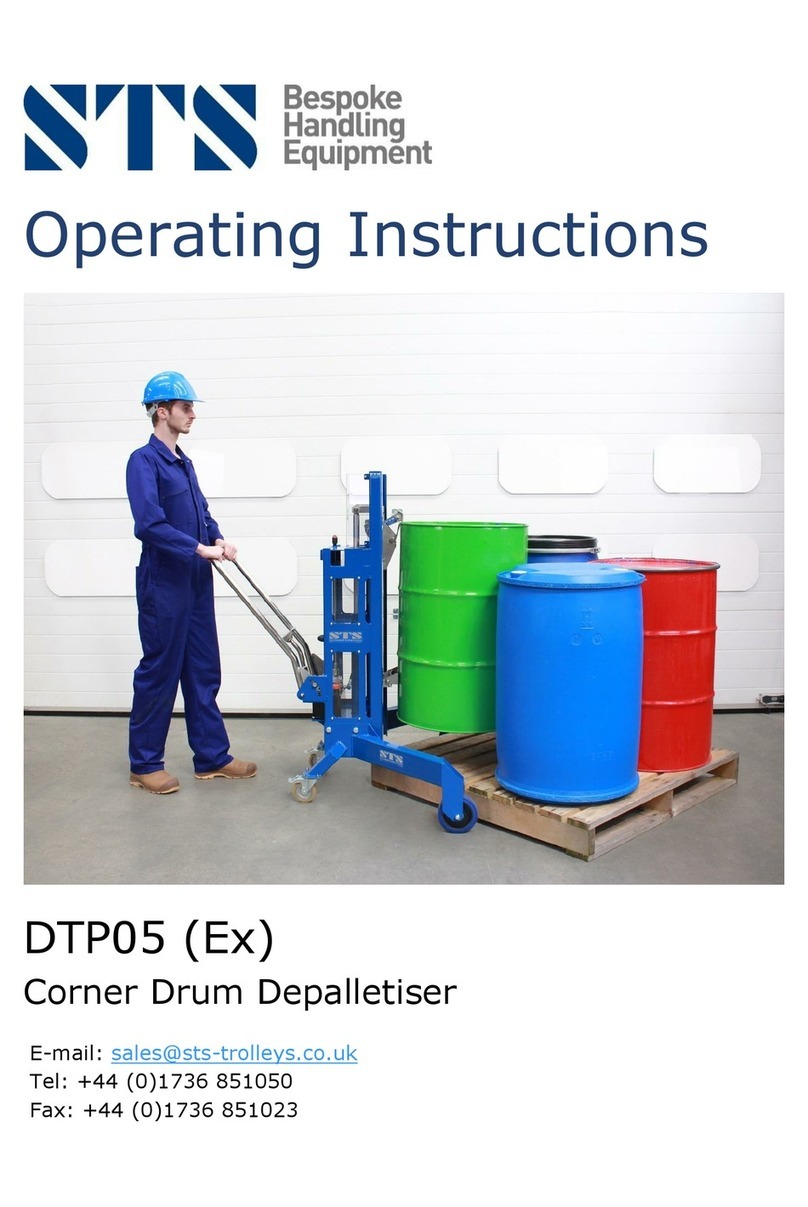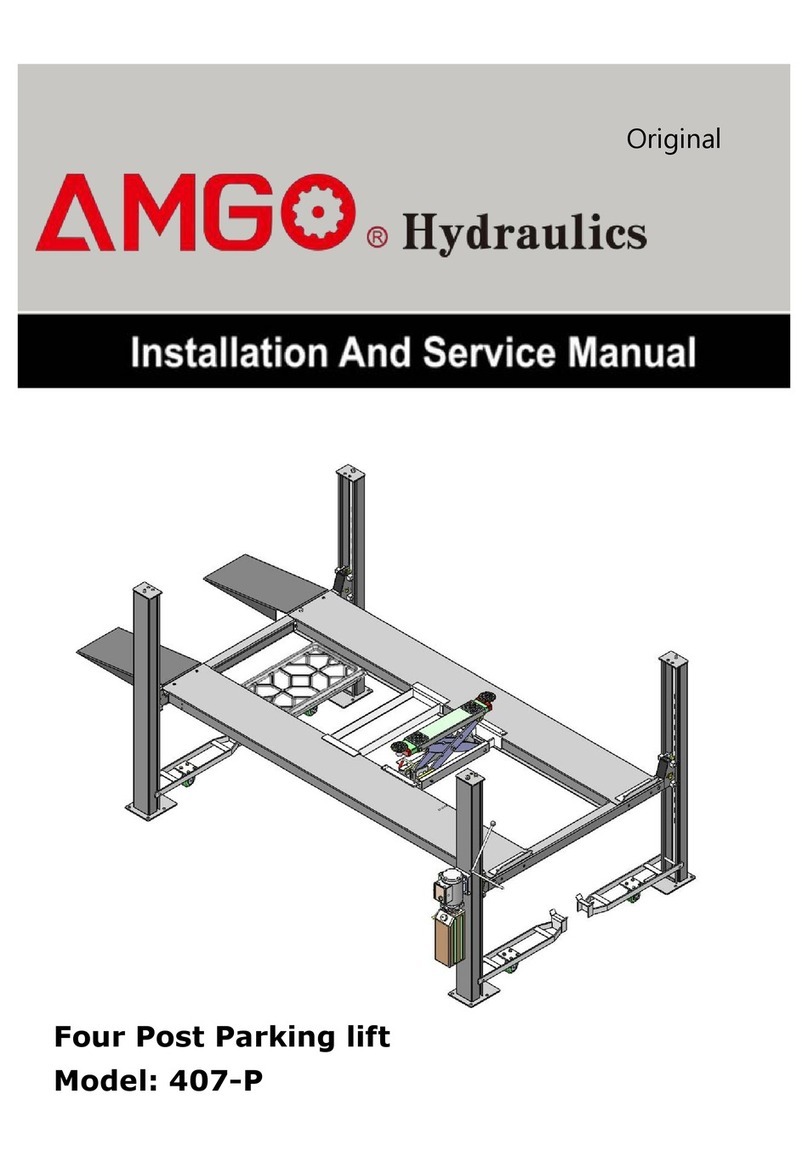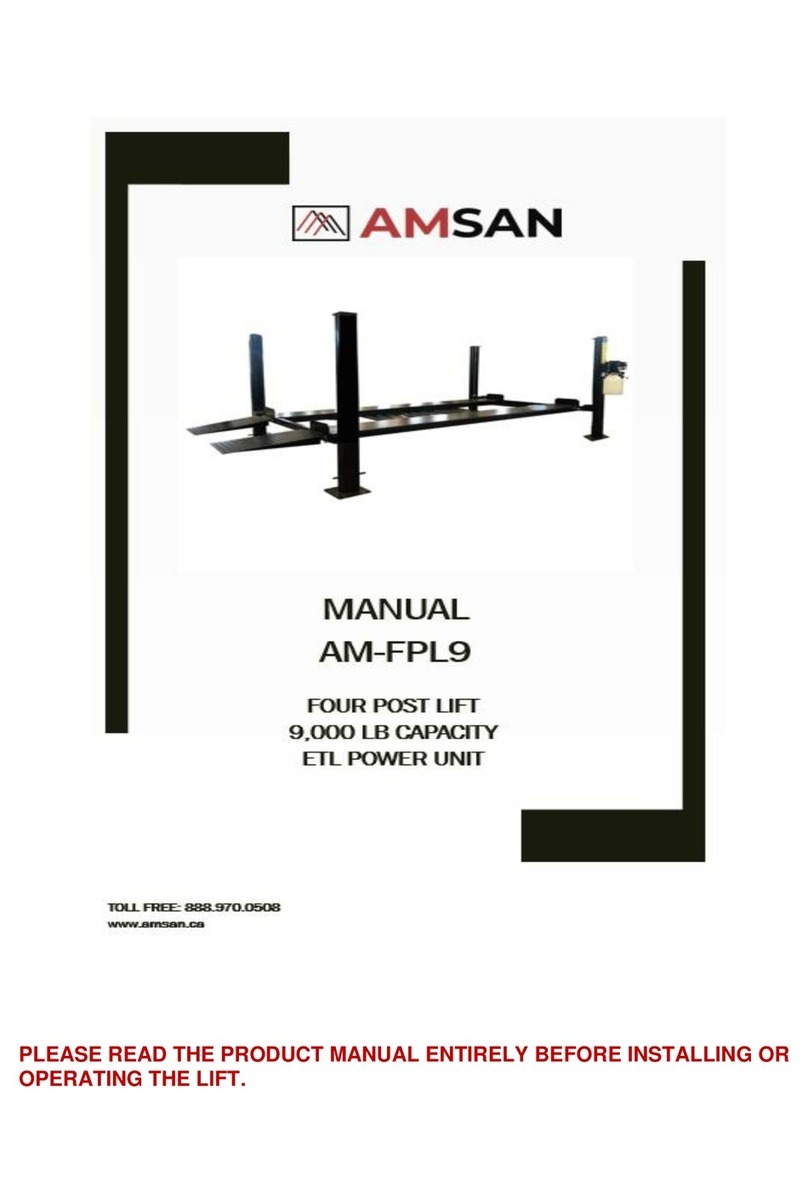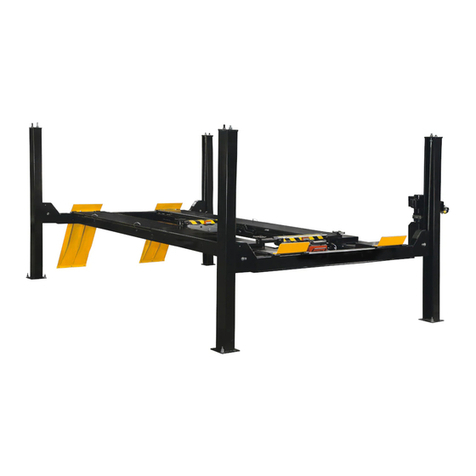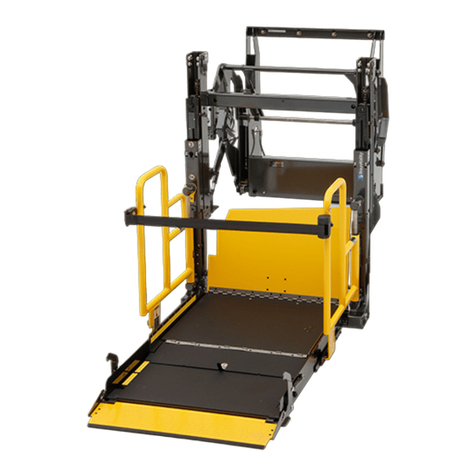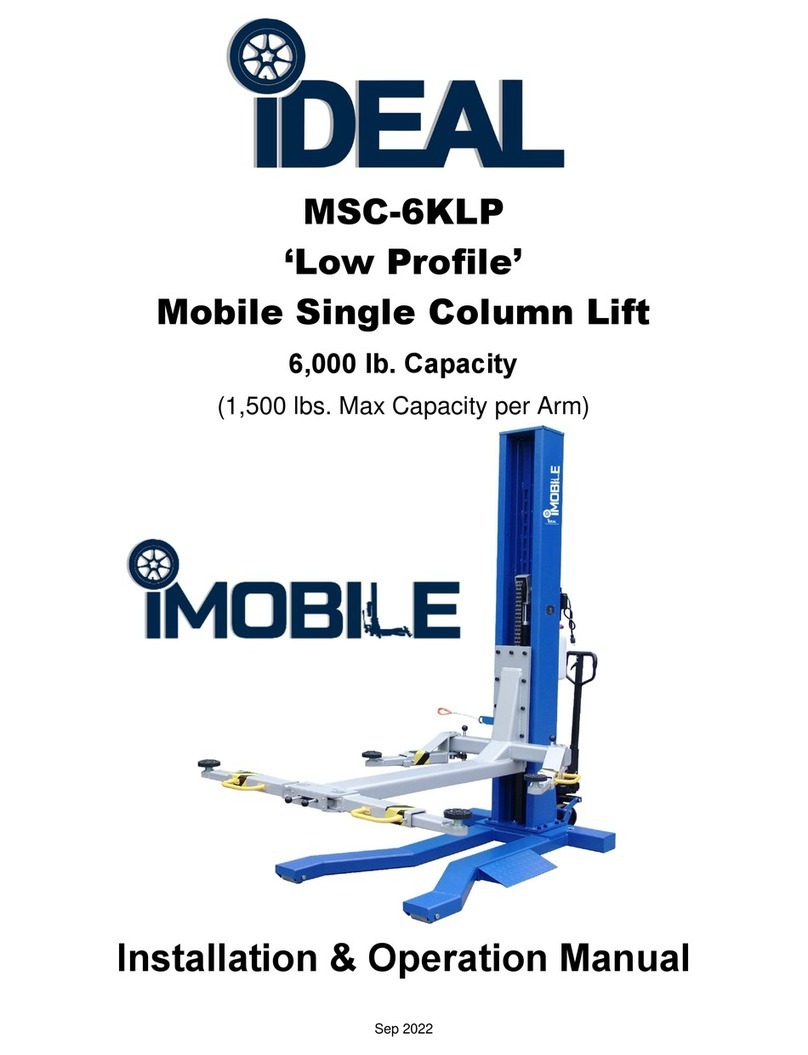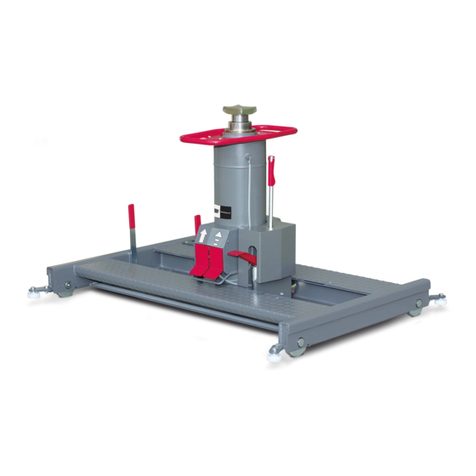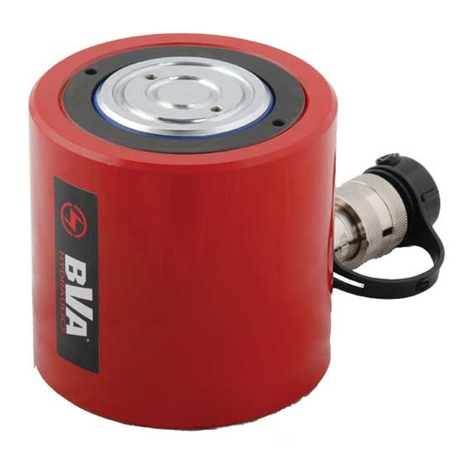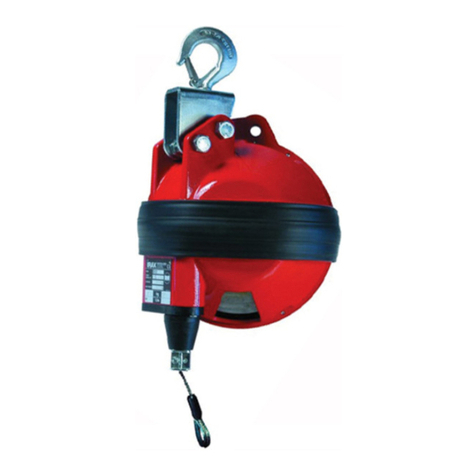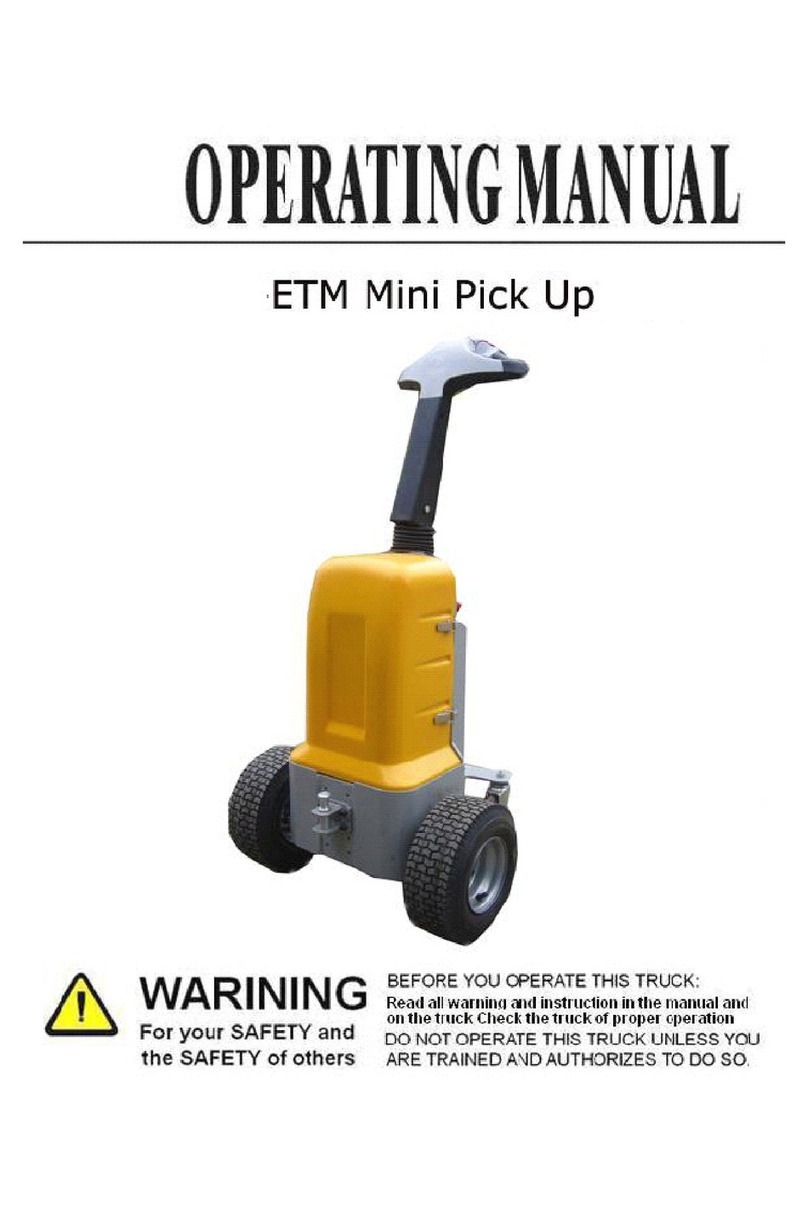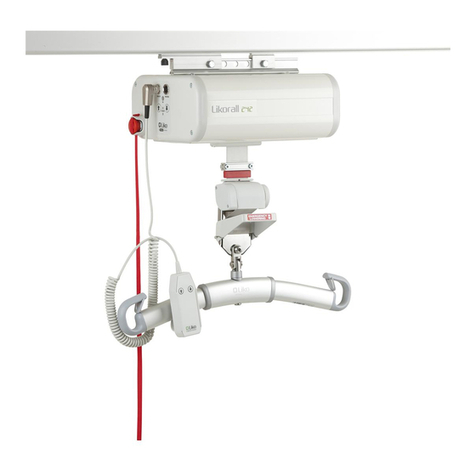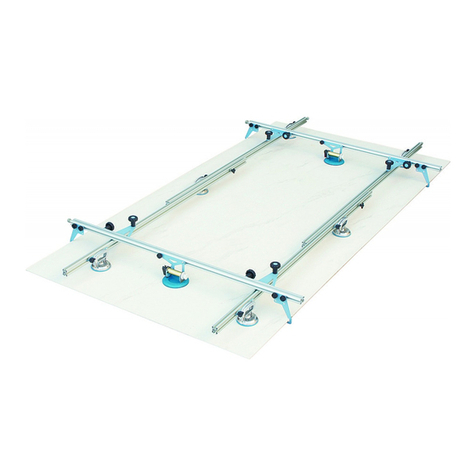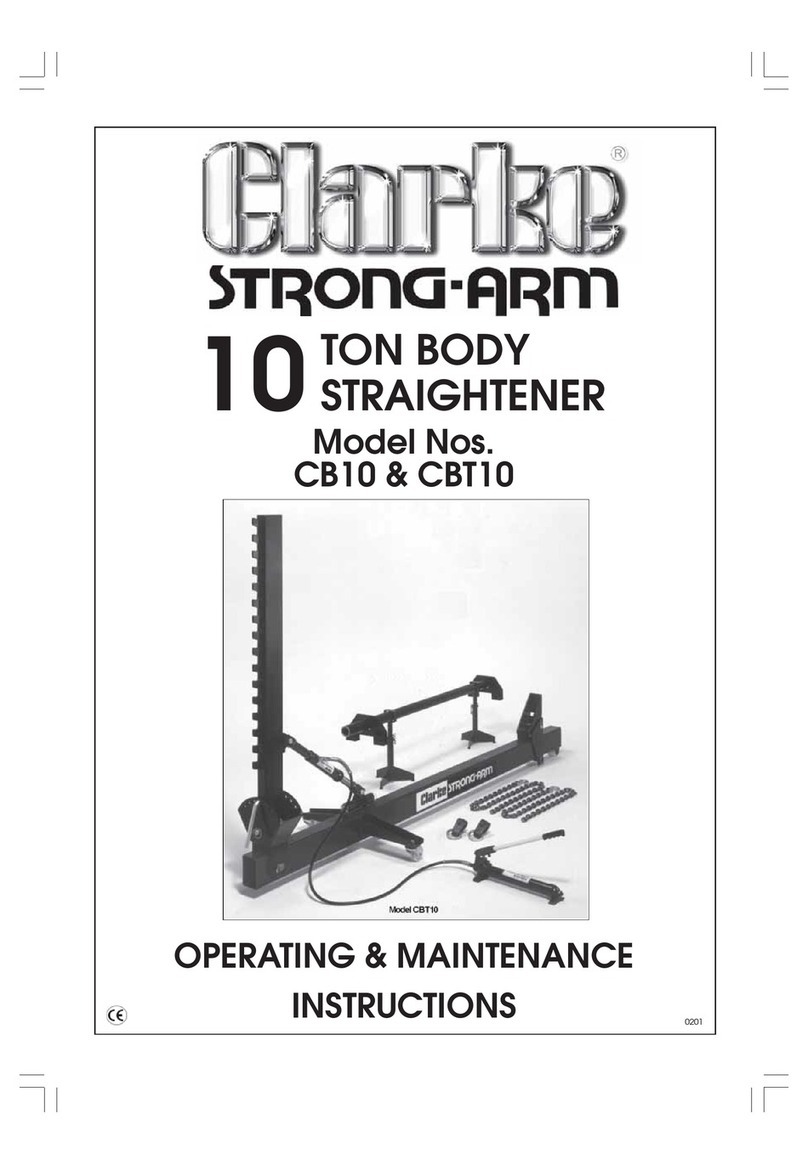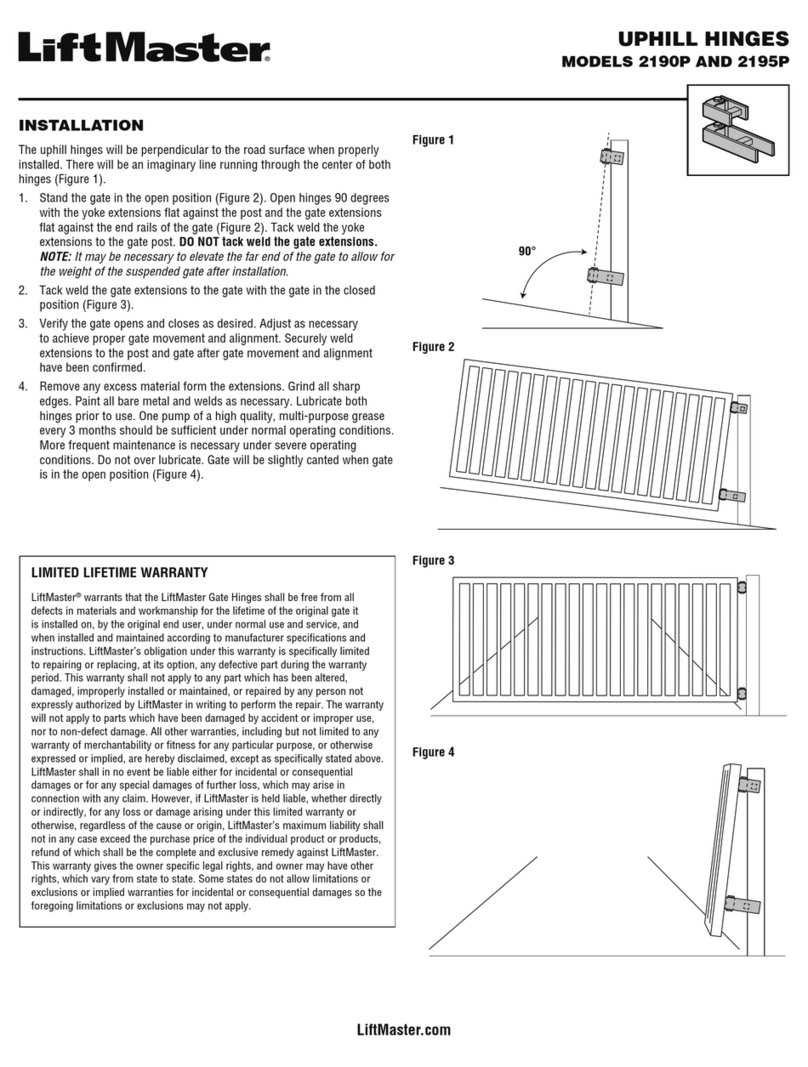STS STM01-DRU01-Ex User manual

1 Operating Instructions: STM01-DRU01-Ex
Section I –Correct Use and Application ............................................................................................2
General ................................................................................................................................................................................2
Foreseeable Misuse of the Unit........................................................................................................................................... 2
Approved Application Conditions..................................................................................................................................... 2
Proprietor Responsibilities ....................................................................................................................................................3
Adding Attachments and/or Accessories.........................................................................................................................3
Safety Regulations for the Operation of the Unit ..............................................................................................................3
Consumables and Parts...................................................................................................................................................... 5
Ex Certified Units (if applicable) .........................................................................................................................................5
Lifting the Unit ......................................................................................................................................................................6
Unit Overview.......................................................................................................................................................................7
Permitted Operating Zones ................................................................................................................................................8
Section II –Unit Description .................................................................................................................9
Section III –Unit Operation ................................................................................................................ 10
Pre-start Inspections .......................................................................................................................................................... 10
Moving the Unit..................................................................................................................................................................11
Operating the Lift and Lower Functions .......................................................................................................................... 12
Clamping a Drum.............................................................................................................................................................. 13
Drum Rotating Head ......................................................................................................................................................... 15
Tipping a Drum .................................................................................................................................................................. 16
Maximum Offset Load for Rotating a Load..................................................................................................................... 16
Using the 25 Litre Drum Insert ‘INS’ (Optional Extra)........................................................................................................ 17
Section IV –Unit Maintenance, Troubleshooting and Consumables ...........................................18
Maintenance Checklist..................................................................................................................................................... 18
Troubleshooting ................................................................................................................................................................. 20
Consumables..................................................................................................................................................................... 22
Oil Replacement........................................................................................................................................................... 22
Ratchet Strap Replacement........................................................................................................................................ 22
Touch Up Paint.............................................................................................................................................................. 23
Polycarbonate Guarding Replacement .................................................................................................................... 23
Wheel Replacement .................................................................................................................................................... 24
Section V - Technical Specification.................................................................................................. 25
General Arrangement ...................................................................................................................................................... 25
Section VI - Decommissioning the Unit ............................................................................................26
Prior to Decommissioning.................................................................................................................................................. 26
Final Decommissioning and Disposal ............................................................................................................................... 26
Recommissioning............................................................................................................................................................... 26
Safety Tests to be Performed at Intervals and After Unusual Incidents. ........................................................................ 26

2 Operating Instructions: STM01-DRU01-Ex
Section I –Correct Use and Application
General
The unit described in the present operating instructions must be used, operated and
serviced in accordance with the present instructions. Any other type of use is beyond
the scope of application and can result in damage or injury to personnel, the unit or
property. The unit described in the present operating instructions complies with BS EN ISO
17050-1:2010 and the EC Machinery Directive 2006/42/EC.
Foreseeable Misuse of the Unit
Personnel must take care when operating the unit. The following actions must be
adhered to:
•The maximum safe working load (SWL) must not be exceeded.
•Do not travel with a raised load 500mm above the ground unless necessary.
•When manoeuvring the unit, do not exceed a speed of 1m/s (3.6km/h).
•When manoeuvring a raised load above 500mm, do not exceed a speed of
0.1m/s (0.36km/h).
•If applicable, do not over lower the head of the unit onto a platform, such as
a mezzanine floor.
•Do not carry or lift other personnel.
•Do not stand or ride on the unit.
•Loads must be undamaged.
•Do not negotiate inclines unless otherwise stated.
•Do not stand underneath a raised load or within the confines of the unit
during operation.
•The load must be lifted and/or mixed by the attachment provided.
•Do not alter the unit specification from original supply.
•Do not disable, remove or adjust safety mechanisms or switches.
•Observe all instruction decals applied to the unit.
•Do not leave the unit in direct sunlight.
•The manufacturer shall not be held liable in case of faults or accidents due to
negligence, incapacity, installation by unqualified personnel or improper use.
Approved Application Conditions
•Operation in dry industrial and commercial environments.
•Permissible temperature range 5°C to 40°C.
•Lighting of at least 300 Lux.
•Altitudes not exceeding 2000m.
•Operation only on secure, level surfaces with sufficient capacity.
•Operation only on routes that are visible and approved by the proprietor.
•Operation in accordance with guidance stated within the operating
instructions.
•The unit must be maintained in accordance with the maintenance schedule
stated within the operating instructions.
•Appropriate personal protective equipment, PPE, must be worn at all times.

3 Operating Instructions: STM01-DRU01-Ex
Proprietor Responsibilities
For the purposes of the present operating instructions the “proprietor” is defined as any
natural or legal person who either uses the unit themselves, or on whose behalf it is used.
In special cases (e.g. leasing or renting) the proprietor is considered the pers on who, in
accordance with existing contractual agreements between the owner and user of the
unit, is charged with operational duties. The proprietor must ensure that the unit is used
only for the purpose for which it is intended and that there is no dange r to life or limb of
the user and third parties. Furthermore, accident prevention regulations, safety
regulations and operating, maintenance and repair guidelines must be followed. The
proprietor must ensure that all users have read and understood these operating
instructions. The proprietor must perform an onsite risk assessment before the unit is put in
to service.
IMPORTANT
Failure to comply with the operating instructions shall invalidate the warranty. The same
applies if improper work is carried out on the unit by the proprietor or third parties
without the permission of the manufacturer.
Adding Attachments and/or Accessories
The mounting or installation of additional equipment which affects or enhances the
performance of the unit requires written permission of the manufacturer. Local authority
approval may also need to be obtained. Local authority approval does not however
constitute the manufacturer’s approval. An onsite risk assessment must then be carried
out.
WARNING - ANY UNAUTHORISED MODIFICATIONS OR ADDITIONS TO THE UNIT SHALL
INVALIDATE THE WARRANTY AND STS SHALL NOT BE LIABLE.
Safety Regulations for the Operation of the Unit
Operator authorisation
The unit may only be used by suitably trained personnel, who have demonstrated to the
proprietor, or their representative that they can operate the unit safely and in
accordance with the operating instructions.
Operator’s rights, obligations and responsibilities
The operator must be informed of their duties and responsibilities and be instructed in
the operation of the unit and shall be familiar with the operating instructions. Operators
must be provided the appropriate PPE as mentioned in the ‘Approved Application
Conditions’ section of this manual.
Unauthorised use of unit
The operator is responsible for the unit during the time it is in use. The operator must
prevent unauthorised persons from operating the unit.
Damage and faults
The proprietor must be immediately informed of any damage or faults to the unit or
attachment. Units which are unsafe for operation must be quarantined until faults have
been rectified and the unit deemed safe for operation.

4 Operating Instructions: STM01-DRU01-Ex
Servicing and repairs
All unit parts and consumables are available from STS. The unit must be fitted with
original STS parts and consumables unless otherwise stated. Any deviation from non-
original parts and consumables may result in injury to personnel or damage to the unit
and will invalidate the warranty. The operator must never disable, remove or adjust
safety mechanisms or switches. The unit should only be serviced and repaired by a
competent individual as selected by the company the equipment is intended for use
with.
Safety devices and warning decals
Safety devices, warning decals and warning instructions in the operating instructions
and on the unit must be strictly observed.
Travel routes and operational areas
Only use lanes and routes specifically designated for unit traffic. Unauthorised third
parties must stay away from operational areas. The unit must only be operated in
operational areas with sufficient lighting to avoid damage or injury to personnel, the unit
or property. Additional equipment is necessary to operate the unit in areas of insufficient
lighting.
Hazardous area of the unit
The hazardous area is defined as the area in which a person is at risk due to the unit itself
or movement of the unit and/or load. This also includes areas which can be reached by
falling loads. The operator must:
•Instruct unauthorised personnel to leave the hazardous area.
•Give a warning signal with plenty of time for personnel to leave.
•Stop all operations if unauthorised personnel are within or enter the hazardous
area.
Travel conduct
The operator must adapt the travel speed to local conditions. The unit must be driven at
slow speed when negotiating bends or narrow passageways, when passing through
swing doors and at blind spots. Abrupt stopping (except in emergencies), rapid U turns
and overtaking at dangerous or blind spots are not permitted. When not in use, the
equipment should be parked in a safe location with the brakes engaged.
Travel visibility
The operator must look in the direction of travel and must always have a clear view of
the route ahead. When transporting loads that affect visibility, a second person must
safely assist the operator to observe the travel route.
Type of loads
The operator must make sure that the load is in a satisfactory condition. Loads must
always be positioned safely and carefully. Use suitable precautions to prevent parts of
the load and/or their contents from falling or spilling.
Cleaning
Cleaning of the unit depends on the environment that the unit is used in. It is
recommended that the unit be cleaned daily if the unit comes into contact with
aggressive substances such as chemicals, fertilizers, salt, etc. It is recommended to use
detergent and a damp cloth to clean the body of the unit. Do not use flammable liquids
to clean the unit. Do not clean the unit with pressurised water. If the unit is rated for Ex
environments, the unit must be kept clean and dust free.

5 Operating Instructions: STM01-DRU01-Ex
Personal protective equipment (PPE)
PPE must be worn at all times. A minimum of safety shoes must be worn while operating
the unit. Safety shoes, safety glasses, protective gloves, hearing protection and
protective overalls are to be worn when carrying out servicing, repairs and
maintenance. When operating overhead loads, a hard hat must be worn. End user
health and safety procedures and best practices should be followed in addition to the
above recommendations.
Consumables and Parts
Environmental hazards
Parts and oils must be disposed of in accordance with the relevant environmental
protection regulations.
Hydraulic hoses (if applicable)
Brittle hydraulic hose lines cause accidents. Hairline cracks in the hydraulic lines can
cause injury and infection. The hydraulic hoses should only be serviced or replaced by a
competent individual as selected by the company the equipment is intended for use
with. It is the responsibility of the proprietor to maintain the hydraulic hoses.
Lift chains (if applicable)
Incorrectly cleaned chains can cause accidents. Lift chains are safety-critical parts.
They must not contain any serious contamination. Lift chains and pivot pins must always
be clean. Never clean chains with high pressure steam jet cleaners, cold or chemical
cleaning agents. It is recommended to clean the chains and pivot pins in an unloaded
state with a citrus cleaner to remove dirt and grime followed by the application of a
PTFE based industrial grade chain lubrication spray or food grade lubrication spray.
NOTE: For more consumable information refer to ‘Section IV – Unit Maintenance,
Troubleshooting and Consumables’.
Ex Certified Units (if applicable)
Operational hazards
Processing of liquids or suspensions (mixing or stirring, filling or draining) can give rise to
ignition risks due to static electricity including the risk of propagating brush discharges.
The processing of liquids or suspensions is the responsibility of the end user.
Environmental hazards
Care should be taken by the end user to ensure collisions do not occur between the unit
and its surrounding environments which may create a potential ignition source.
Earthing chains
Ensure earthing chains are securely fitted and are in contact with the ground at all
times, wheels should be kept clean and free from debris.
Electrically powered units
Care should be taken by the end user to ensure any electrical cables to and/or from the
unit are kept away from travel areas where they may become entangled, damaged or
be a trip hazard. Electrical cables must be kept dry, clean and be routinely checked as
stated in the maintenance procedures. Any cracked or damaged electrical cables must
be reported immediately and the unit be put out of service until resolved.

6 Operating Instructions: STM01-DRU01-Ex
Lifting the Unit
Lifting the unit safely
In order to raise the unit safely, including off a pallet, proceed as follows:
•The unit must be on a level surface to prevent it from moving accidently.
•The lifting gear must only be secured to the points designated for this
purpose.
•Always use lifting gear with sufficient capacity.
•The unit should only be handled by qualified personnel who are trained in
using lifting slings and tools.
•Do not walk into or stand under a raised unit.
•If necessary, secure the unit with guide ropes to aid when lifting the unit.
Jacking the unit safely
In order to jack up the unit safely, proceed as follows:
•The unit must be on a level surface to prevent it from moving accidently.
•Always use a jack with sufficient capacity.
•The unit should only be handled by qualified personnel who are trained in
using lifting slings and tools.
•When jacking up the unit, take appropriate measures to prevent it from
moving, slipping or tipping over (e.g. wedges, wooden blocks, strops)
WARNING - IMPROPER LIFTING CAN RESULT IN SERIOUS ACCIDENTS
Securing the unit for transport
In order to transport the unit safely, proceed as follows:
•The unit must be securely fastened when transported on a lorry/trailer.
•The lorry/trailer must have fastening rings.
•Use wedges to prevent the unit from moving.
•Use only tension belts or tie-down straps with sufficient strength.
WARNING - IMPROPER FASTENING OF THE UNIT DURING TRANSPORT CAN RESULT IN
SERIOUS ACCIDENTS
IMPORTANT
After use, remove supplied lifting strop(s) and/or dee shackles and dispose.

7 Operating Instructions: STM01-DRU01-Ex
Unit Overview
No.
Function
1
Steering
2
Control Box
3
Brakes
4
Wheels
5
Legs
6
Clamping Band
7
Head
8
Lifting Chains
9
Chassis
10
Polycarbonate Guarding
2
1
3
4
4
5
6
7
9
10
8
Note: Generic unit
shown
Lifting Point

8 Operating Instructions: STM01-DRU01-Ex
Permitted Operating Zones
The unit is designed to be used by a single operator from the rear of the unit, unless otherwise
stated. All other personnel in the area where the unit is in operation must remain clear of the
unit, behind the unit or within area 1 shown below. Area 1 is classed as the safe working area.
Certain functions of the unit require the operator to work within area 2, the operator working
within area 2 must be aware of the unit’s functions and movements along with their potential
trap points.
If the unit is fitted with a manual rotation handle, head controls or fitted with a pendant
controller, the operator must remain within the areas 1 and 2 whilst operating the unit.
If applicable, the unit power must be isolated when accessing the front of the unit.
WARNING - DO NOT STAND UNDERNEATH A RAISED LOAD, WITHIN THE CONFINES OF THE UNIT
OR IN FRONT OF THE UNIT DURING OPERATION.
Area 1
Area 2
Rear of Unit
Front of Unit

9 Operating Instructions: STM01-DRU01-Ex
Section II –Unit Description
The STM01-DRU01-Ex is a four-wheeled pedestrian stacker with a drum rotator band. The unit
is manual-hydraulic powered with manual drum rotation.
It is designed for use on level surfaces for use with drums ranging from 50 - 220 litres, steel or
plastic drums with a diameter of between 350mm - 600mm.
The drum should be stood vertical; the unit can then approach the drum and straddle either
side. The band is pushed flush to the drum and then fastened around the drum using the
ratchet and strap. Once the rim clamp is adjusted and fastened to the top lip of the drum, it
can then be lifted, transported and rotated.
The unit incorporates enclosed, smooth geometry with rounded edges to ensure safe
handling of the unit. The unit is fitted with a fully enclosed ram, which is operated from the
rear of the unit to keep operator’s limbs away from dangerous machinery movement.
THE SAFE WORKING LOAD (SWL) OF THIS UNIT IS 350KG
THIS UNIT IS DESIGNED FOR USE ON FLAT AND LEVEL FLOORS ONLY
Ex CERTIFICATION
This equipment has been certified by STS for use in Zone 1, 2, 21 and 22 areas for protection
under constructional safety “c” and control of ignition source “b”.
IMPORTANT
Consideration must be taken by the end user to ensure safety and conformity within Ex zones
between the unit and its surrounding environment including any interfaces which may occur.

10 Operating Instructions: STM01-DRU01-Ex
Section III –Unit Operation
IMPORTANT
Before using this unit, operators must read and understand this instruction manual. Failure to
observe the instructions in this manual will invalidate the warranty.
NOTE: Personal Protective Equipment (PPE) must be worn at all times, see ‘Section I –Correct
Use and Application’ for more information.
Pre-start Inspections
Procedure
•Check the whole of the outside of the unit for signs of damage and leaks. Any
damaged hoses must be replaced immediately.
•Check the unit for visible signs of damage such as cracks, bent or severely worn parts.
•Check all wheels for damage.
•Check that the markings and labels are present, clean and legible.
•Check the tiller handle is restored to its normal position.
•Ensure battery is fully charged (if applicable).
•Test the function of the emergency stop.
•Test the tiller horn (if applicable).
•Test brakes, adjust if necessary. (not applicable to powerdrive units)
•Check doors and/or covers for damage.
•Check the mast guarding for damage.
•Inspect the clamping mechanism for wear and damage.
•If applicable, check all Ex features:
oEarthing chains are in contact with the ground.
oCheck wheels for dirt and grime, clean if required.
oCheck and clean, if required, the clamping pads on the head of the unit.
oCheck unit for any damaged painted surfaces, touch up, if necessary, with an
approved touch up paint (see consumables).
oCheck stainless-steel guards for damage.
OPERATORS SHOULD REPORT ANY DEFECTS ON THE UNIT TO THE APPROPRIATE PERSON. IF IN
ANY DOUBT, OR SHOULD REPLACEMENT PARTS BE NEEDED, PLEASE CONTACT THE STS
TECHNICAL SUPPORT LINE.

11 Operating Instructions: STM01-DRU01-Ex
Moving the Unit
Requirements
-If loaded, the load must not exceed the unit’s capacity.
-If loaded, load undamaged.
-Load at correct height for transport (< 500mm).
-Flat and level ground conditions.
Procedure
•Disengage the rear parking brakes.
•The unit can then be manoeuvred to the desired location.
•Steering is controlled from the rear of the stacker using the handles.
•Travel at a constant speed.
•Adapt your travel speed to the conditions of the route and the load you are
transporting.
•Always transport loads at as low a height as possible to retain the stability of the unit.
•When finished manoeuvring, the rear parking brakes should be engaged.
THIS UNIT IS DESIGNED FOR USE ON FLAT AND LEVEL FLOOR ONLY

12 Operating Instructions: STM01-DRU01-Ex
Operating the Lift and Lower Functions
Requirements
-Good ground conditions.
-If loaded, the load must not exceed the unit’s capacity.
-If loaded, load undamaged.
-If loaded, load clamped correctly.
Procedure
•To lift the unit carriage, operate the manual pump handle forwards and backwards
as shown above.
•If the operator stops pumping the handle, the carriage will remain at the attained
height.
•To lower the carriage of the unit, simply rotate the lowering valve anti-clockwise.
•If the lowering valve is turned further, the carriage will lower quicker. This allows the
operator to have more precise control of the lowering speed.
WARNING –DO NOT ROTATE THE LOWERING LEVER CLOCKWISE AS THIS MAY DAMAGE THE
UNIT.
WARNING –DO NOT LEAVE A RAISED LOAD UNATTENDED
Manual Pump Handle
Lowering Valve

13 Operating Instructions: STM01-DRU01-Ex
Clamping a Drum
Requirements
-If loaded, the load must not exceed the unit’s capacity.
-If loaded, load undamaged.
Procedure
•The drum should be sitting on the floor or a pallet vertically.
•Open up the arms on the rotator to the full width and move the unit forward so that
the rotator band goes around the drum.
•There are two pivot points, one on each arm. These should be positioned at the
middle of the drum. Manoeuvre the unit until the pivots are in the middle of the drum.
•Push the two arms in so that the two pivot band sections touch the drum.
•Adjust the height of the clamping band by raising or lowering the carriage until the
clamping band is in the middle of the drum (this means top to bottom middle).
•Adjust the back section of the clamping band to suit the diameter of the drum by
removing the two locking ‘R’ clips from the rear of the clamping band then adjusting
the band to the correct diameter of the drum before refitting the two ‘R’ clips. The
rear section of the band should be complete from the two pivot points.
•Fold the two front sections of the drum clamp band around the front so that they
touch the drum.
•Hook the ‘D’ ring that is on the end of the blue ratchet strap onto the securing pin,
which is on the last band section on the left-hand arm and pull on the tail of the blue
ratchet strap to take out the slack. Then use the ratchet to tension the clamping
band, this should be tightened until the drum starts to show signs of deflection.
‘R’ Clips
‘D’ Ring
Blue Ratchet Strap
Ratchet

14 Operating Instructions: STM01-DRU01-Ex
•The rim clamp must be connected to the top lip of
the drum. The height can be set by removing the ‘R’
clip, which is close to the right-hand pivot, and
removing the pin. The rim clamp arm can now be set
to the correct height to suit the drum size. Ensure that
the top of the drum rim clamp arm is positioned
under the top rim of the drum. Whilst this is being held
in place the top swivelling clamp can be positioned
over the rim of the drum. You can now clamp the
two together by screwing down the butterfly nut. You
should check that the top drum lip is securely
clamped between the two sections of the drum rim
clamp.
•Replace the clamping arm adjustment pin through the body of the rotator bracket
and replace the locking ‘R’ clips.
•IMPORTANT –Check the above steps have been completed correctly before you lift
the drum off the floor. If you are in any doubt then contact the STS technical support
line.
WARNING - DO NOT ATTEMPT TO LIFT A LOAD WITHOUT THE LOCKING ‘R’ CLIPS FITTED TO THE
BAND.

15 Operating Instructions: STM01-DRU01-Ex
Drum Rotating Head
No.
Function
1
Universal Clamp Band
2
DRU01 - Manual Rotate Gearbox
3
DRH01 - Hydraulic Rotate Gearbox
4
DRE01 - Electric Rotate Gearbox
3
4
2
1

16 Operating Instructions: STM01-DRU01-Ex
Tipping a Drum
Requirements
-If loaded, the load must not exceed the unit’s capacity.
-If loaded, load undamaged.
-If loaded, load clamped correctly.
Procedure
•The operator simply rotates the fold-out rotation handle to tip the drum forwards and
backwards. If the drum is tipped and the handle is released, the drum will stay in its
current position.
Maximum Offset Load for Rotating a Load
The maximum allowable torque through the gearbox for rotating an offset load is 320Nm.
The loading scenario shown below is equivalent to the maximum allowable torque. The
example shows a half-filled drum of extremely viscous contents, weighing 147kg, where the
centre of mass of the load is offset by a distance of 221mm.
WARNING - ROTATING A DRUM WITH A HIGHER OFFSET LOAD IS TREATED AS MISUSE AND MAY
DAMAGE THE UNIT.
Note: Generic unit
shown

17 Operating Instructions: STM01-DRU01-Ex
Using the 25 Litre Drum Insert ‘INS’ (Optional Extra)
The unit can also be supplied with an insert that can be
fitted to the gearbox side of the clamping band with two
locking pins. The insert is used to reduce the clamping
width of the clamping band. To attach the adaptor,
insert the two locking pins and secure in position using
the attached ‘R’ clips. The locking pins must be fitted
behind the standard clamp band panel nearest the
gearbox to hold the insert in place. With the insert fitted,
the ratchet and strap should be used to clamp and
secure a drum. The adaptor should only be used to pick up small drums that do not fit in the
normal head arrangement.
‘R’ Clip
Locking Pin
Insert

18 Operating Instructions: STM01-DRU01-Ex
Section IV –Unit Maintenance, Troubleshooting and Consumables
Maintenance Checklist
The follow servicing checklist indicates the operations to be performed and the respective
intervals to be observed. Maintenance intervals are defined as:
W = Every 50 service hours, at least weekly
A = Every 1000 service hours, at least annually
● = Standard maintenance interval
During the run-in period –after approx. 100 service hours –the owner must check the wheel
nuts/bolts and re-tighten if necessary.
NOTE: Personal Protective Equipment (PPE) must be worn at all times, see ‘Section I –Correct
Use and Application’ for more information.
NOTE: Maintenance must only be performed by a suitably competent individual as decided
by the company the equipment is intended for use with. All electrical maintenance must only
be performed by qualified personnel.
Manual Braking (if applicable)
W
A
1
Test brakes, adjust bolt if necessary
●
●
Power Drive Braking (if applicable)
W
A
1
Test automatic brake by accelerating the unit and releasing the throttle
●
●
Hydraulic Operations
W
A
1
Test hydraulic system
●
●
2
Check hydraulic oil and top up, if necessary, to the line or middle of the sight
glass (see ‘Consumables’ for oil type and instructions)
●
●
3
Check that hydraulic ports, hose and pipe lines are secure, check for leaks and
damage
●
●
4
Check cylinders and piston rods for damage and leaks, make sure they are
secure
●
5
Test “hydraulic” controls and make sure the labels are present, legible and
complete
●
6
Replace hydraulic oil (see ‘Consumables’ for oil type and instructions)
●
7
Check hydraulic oil for condensed water, replace if necessary (see
‘Consumables’ for oil type and instructions)
●
Chassis and Superstructure
W
A
1
Check doors and/or covers for damage
●
●
2
Check labels are legible and complete
●
●
3
Check guarding for damage and visibility, replace if necessary (see
‘Consumables’ for instructions)
●
●
Travel
W
A
1
Check wheels for wear and damage, replace if necessary (see ‘Consumables’
for instructions)
●
●
2
Clean wheels if required
●
●

19 Operating Instructions: STM01-DRU01-Ex
4
Check chassis and fixing connections for damage
●
5
Check the load chains tension, adjust chains to the same tension if necessary
●
6
Check the load chains become slack when fully lowered, adjust if necessary
●
●
7
Check the load chains for wear and damage, clean if necessary
●
8
Apply chain lubricant spray, PTFE or food grade chain lubrication spray
●
9
Visually inspect the mast bearings and check the contact surface wear level,
grease if necessary
●
10
Check lateral clearance of mast connections and carriage
●
11
Check carriage and head (load handler) for wear and damage
●
12
Check channels and bearings for cracks and/or damage
●
13
If applicable, check clamping pads for wear and/or damage, replace if
necessary (see ‘Consumables’ for instructions)
●
●
14
If applicable, check the blue ratchet strap for wear and/or damage, replace if
necessary (see ‘Consumables’ for instructions)
●
●
Ex Checks (-Ex models only)
W
A
1
Check wheels for dirt and grime, clean if required
●
●
2
Clean unit, ensure dirt and dust free
●
●
3
Ensure earthing chains are fitted and in contact with the ground
●
●
4
Check and clean, if required, the clamping pads on the head of the unit
●
●
5
Check unit for any damaged painted surfaces, touch up, if necessary, with an
approved touch up paint
●
●
6
Check, if originally fitted, stainless steel guarding plates are in place and
undamaged
●
●
Pneumatic Operations (if applicable)
W
A
1
Check and replace, if required, pneumatic filter elements
●
2
Test emergency stop
●
●
3
If applicable, test the horn
●
●
4
Disconnect airline to allow air filter regulator to drain
●
●
Electrical System (if applicable)
W
A
1
Test warning and safety devices in accordance with operating instructions
●
●
2
Test emergency stop
●
●
3
If applicable, test the horn
●
●
4
Check electric wiring for damage (insulation damage, connections). Make sure
wire connections are secure
●
5
Check contactors and/or relays
●
6
Ensure that there is no potential difference between the unit chassis and the
battery negative and also between the unit chassis and the charger earth
●
7
Check battery and battery components
●
8
Check battery cable connections are secure, grease terminals if necessary
●
9
Check battery connector for damage, test it and make sure it is secure
●
10
Charger, check mains connector and mains cable
●
11
Charger, check the wires and electrical connections are secure and not
damaged
●
12
Inspect electrical contact to ensure they are clean, tight and free from
corrosion or heats damage from arcing.
●
13
If applicable, check power drive disconnects when charging
●
OPERATORS SHOULD REPORT ANY DEFECTS ON THE UNIT TO THE APPROPRIATE PERSON. IF IN
ANY DOUBT, OR SHOULD REPLACMENT PARTS BE NEEDED, PLEASE CONTACT THE STS TECHNICAL
SUPPORT LINE.
Table of contents
Other STS Lifting System manuals


